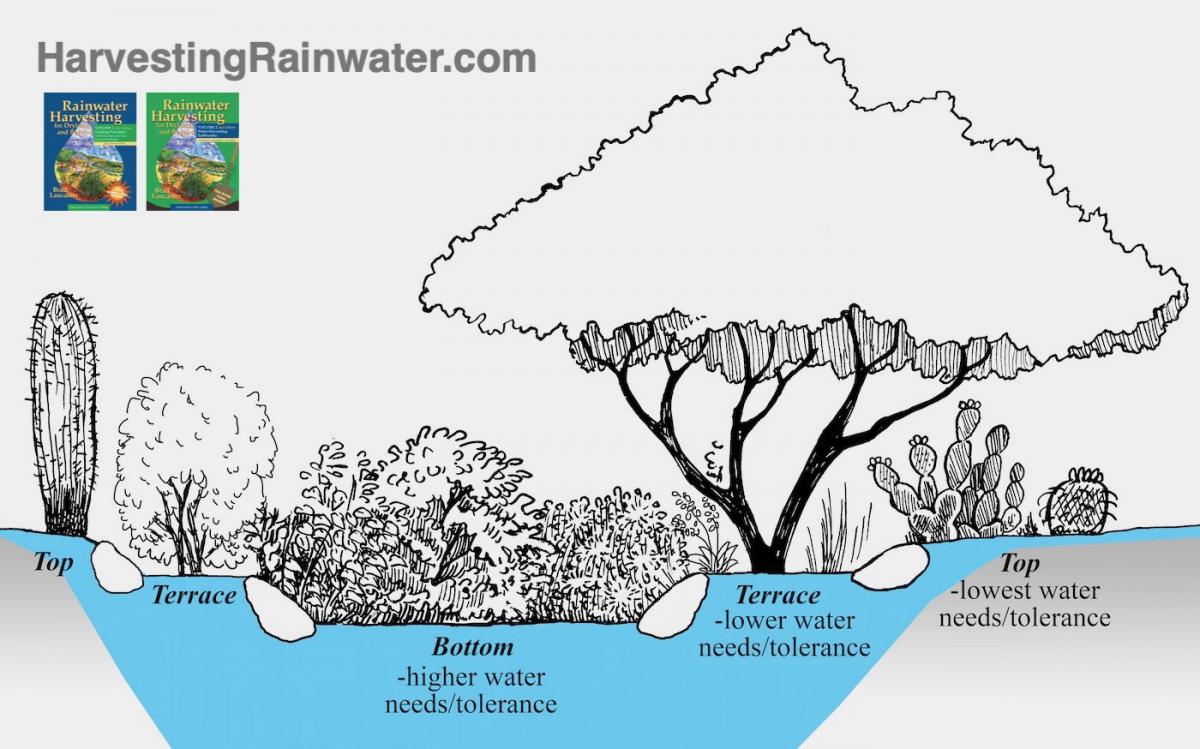Family:Simmondsiaceae
Common Names:
- English: goat nut or jojoba
- Spanish: jojoba
-
O'odham: Hohowai
Scientific Name: Simmondsia chinensis
Rain Garden Zone: S. chinensis does well in the terrace Rain Garden Zone.

Reproduced with permission from "Rainwater Harvesting for Drylands and Beyond" by Brad Lancaster, HarvestingRainwater.com
Characteristics: S. chinensis is an evergreen shrub that can grow up to 6.5 ft in height with a
dense, rounded form (1). Stiff branches produce leathery, oval-shaped leaves with a gray-green
color (1). Flowers on female plants are pale green and produce small fruits resembling acorns,
and male plants have flowers yellow-green in color (1).
Landscape Cultivation: The shrub is quite hardy, low water use and cold tolerant (down to 15
oF) (1). This plant is commonly found growing on dry slopes along washes with full sun to part
shade (2).
Ethnobotany:
Wildlife:
Deer, javelina, bighorn sheep browse the foliage, and the fruits are eaten by smaller
mammals such as squirrels, rodents and rabbits (3)
Edible:
The nuts may be eaten in small quantities - taste and digestibility is improved and tannin
reduced when roasted, parched, or boiled (4). The fruits may also be used as a coffee
substitute (4).
Other:
Seeds contains an oil that has similar qualities to sperm whale oil and has a wide variety
of applications/uses, including leather preservation, cosmetics, lubricants and car wax
(1, 2, 3).
References:
1. UA Campus Arboretum
2. Lady Bird Johnson Wildflower Center
3. Arizona-Sonora Desert Museum
4. Niethammer, Carolyn J. (1987). The Tumbleweed Gourmet – Cooking with Wild
Southwestern Plants. University of Arizona Press.
For more information on this plant, see the Campus Arboretum species description page.

